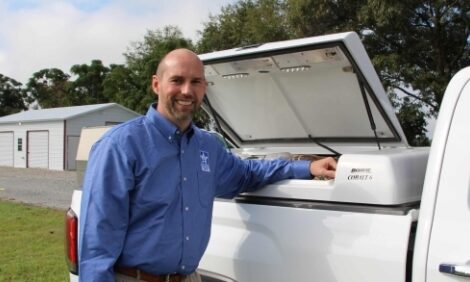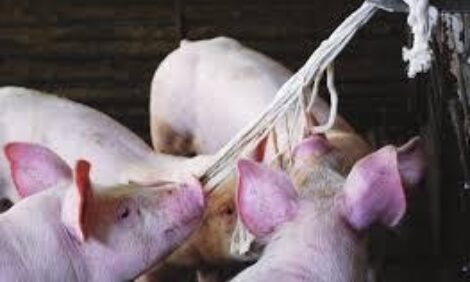



Genetics of Teat Number in Swine
Teat number and more importantly number of functional teats is an important factor in sow productivity.Over the last few decades, breeding programs have achieved significant improvements in litter size. As noted by Chalkias et al. (2013) improvement programs should aim to increase the number of teats in tandem with litter size to adequately meet the needs of the piglets. The issue of functional teats is one that has an upper limit but there are many other factors that can contribute to a teat’s functionality. Improving the number of teats is likely to aid in the improvement of sow productivity by way of increased milk production, assuming all teats produce the same amount of milk. As well, access to colostrum as soon after birth as possible is a critical factor in piglet survival. It is important to have a good knowledge of what the average litter size and the number of teats are in the herd.
Estimates of heritability for number of teats range between 0.07 and 0.42 (McKay and Rahnefeld, 1990; Chalkias et al., 2013, Lundheim et al. 2013). This indicates a reasonable expectation of response to genetic selection for number of teats. Like any trait in animal improvement programs, there are management factors/considerations and activities that can enhance the productivity of the sows functioning teats (see http://www.genesus.com/global-tech-report/teat-management). Generally, teats are grouped into functional (good and desirable) teats, inverted and supernumerary (extra) teats. A functional teat is one with a well-developed predominant sphincter. A teat that is turned inwards is inverted. There are various degrees of inversions. Supernumerary teats are usually small and shorter in size in relation to the normal (functional) teats. While visual inspection and classification of teats can be done during processing 2 to 3 days after birth, it is not possible to accurately differentiate between functional and non-functional teats.
Lundheim et al. (2013) examined the genetic association between total number of teats and number of functional teats evaluated at the end of a performance test (100kg body weight) in Yorkshire gilts. They found that the total number of teats and number of functional teats had a high and positive genetic correlation (0.82) indicating that selection for total teats would result in a significant increase in number of functional teats. Thus, from an objective measurement point of view the total number of teats is usually used as a proxy for the number of functional teats. Additionally they examined the genetic correlations between number of functional teats and number of total teats with average piglet weaning weight in parity 1 and parity 2. These values ranged from -.040 to +0.13 indicating that from a genetic point of view increasing the number of functional or total number of teats would have very little impact on average piglet weaning weight.
Another layer of grouping can be the number of teats anterior and posterior to the naval. McKay and Rahnefeld (1990) found that number of teats anterior to the naval had heritability estimates lower than the number posterior to the naval. In addition, the genetic correlations between anterior and posterior teat numbers were 0.04 and 0.38 for Landrace and Yorkshire breeds, respectively. A case warranting further study in this area since this suggests that the two areas may be under the control of different genes. Genesus’ own internal research has suggested a quadrant method in which the anterior and posterior sides are further divided into left and right sides leading to anterior left, anterior right, posterior left and posterior right.
In recent years several studies have focused on genomics for teat number. Genome-wide association studies (GWAS) can be useful in the search for chromosomal regions that can explain the genetic architecture of this component of the sow productivity trait complex (Verardo et al. 2014). These researchers and others have identified markers and genes that influence the number of teats.
In its continuous efforts to deliver profitability to its customers, the Genesus genetics program includes (1) collection of number of teats on maternal piglets at 3 to 5 days of age, (2) number of teats in selection of maternal boars to put on performance test, and (3) at the end of performance test a rigorous visual inspection by highly trained technicians for number and quality of teats on each pig. This focus on underlines combined with a well-focused R&D program will continue to deliver successful improvement in sow efficiency and profitability for Genesus customers.
References
Chalkias H., L. Rydhmer and N. Lundeheim. 2013. Genetic analysis of functional and non-functional teats in a population of Yorkshire pigs. Livest. Sci. 152:2.
N. Lundeheim, H. Chalkias & L. Rydhmer (2013) Genetic analysis of teat number and litter traits in pigs, Acta Agriculturae Scandinavica, Section A — Animal Science, 63:3, 121-125, DOI: 10.1080/09064702.2013.841749
McKay R. M. and G.W. Rahnefeld. 1990. Heritability of teat number in swine. Can. J. Anim. Sci. 70: 425-430.
Verardo L. L., F. F. Silva, L. Varona, M. D. V. Resende, J. W. M. Bastiaansen, P. S. Lopes and E. E. F. Guimaraes. 2014. Bayesian GWAS and network analysis revealed new candidate genes for number of teats in pigs. J. Appl Genetics. DOI:10.1007/s13353-014-0240-y (online version).







